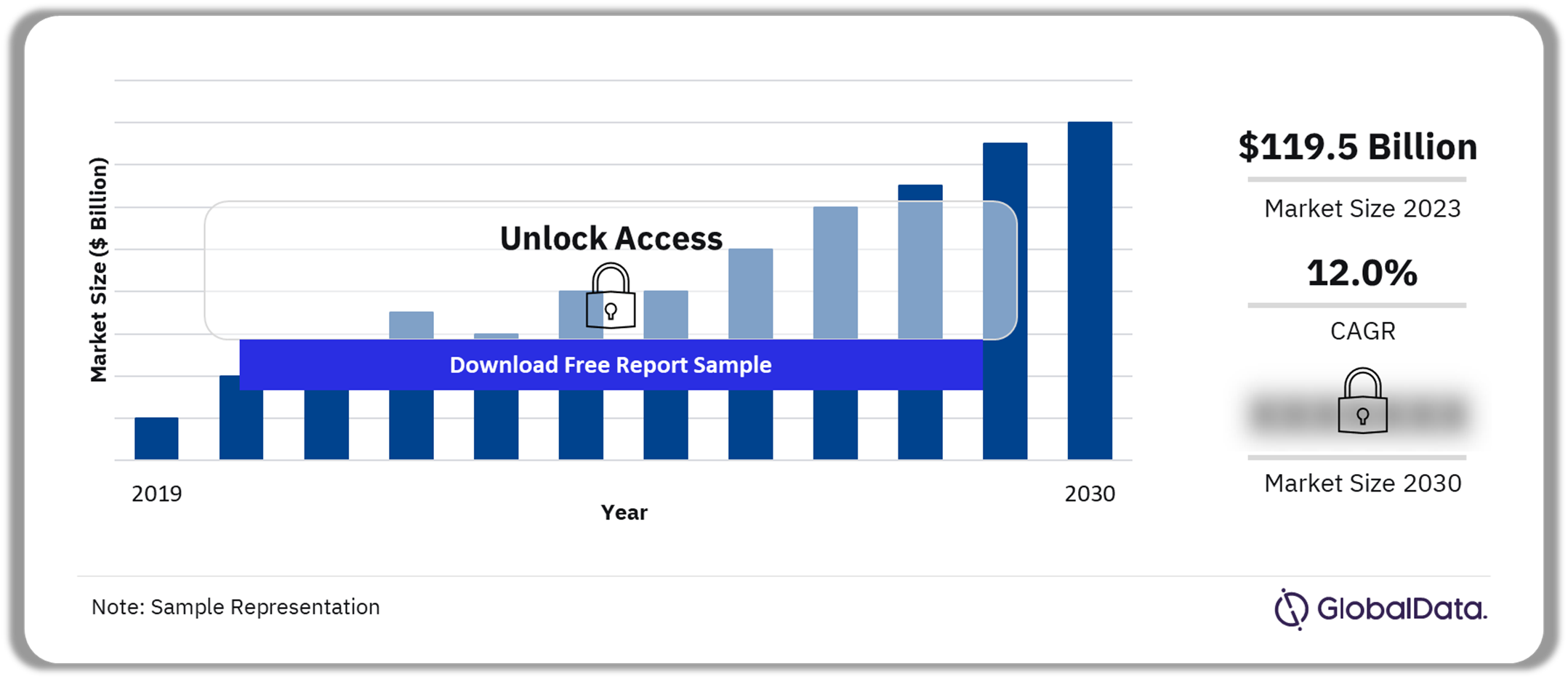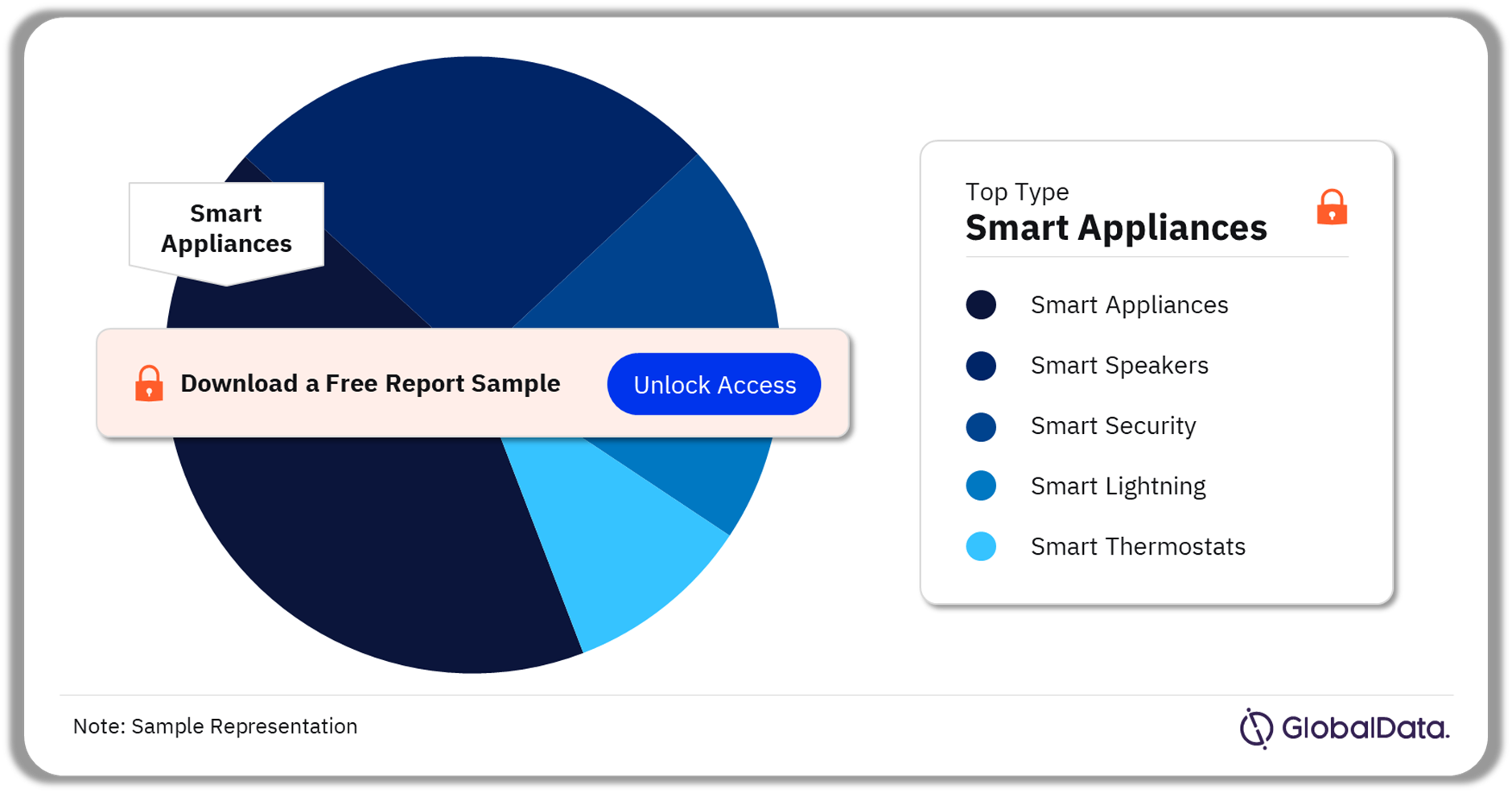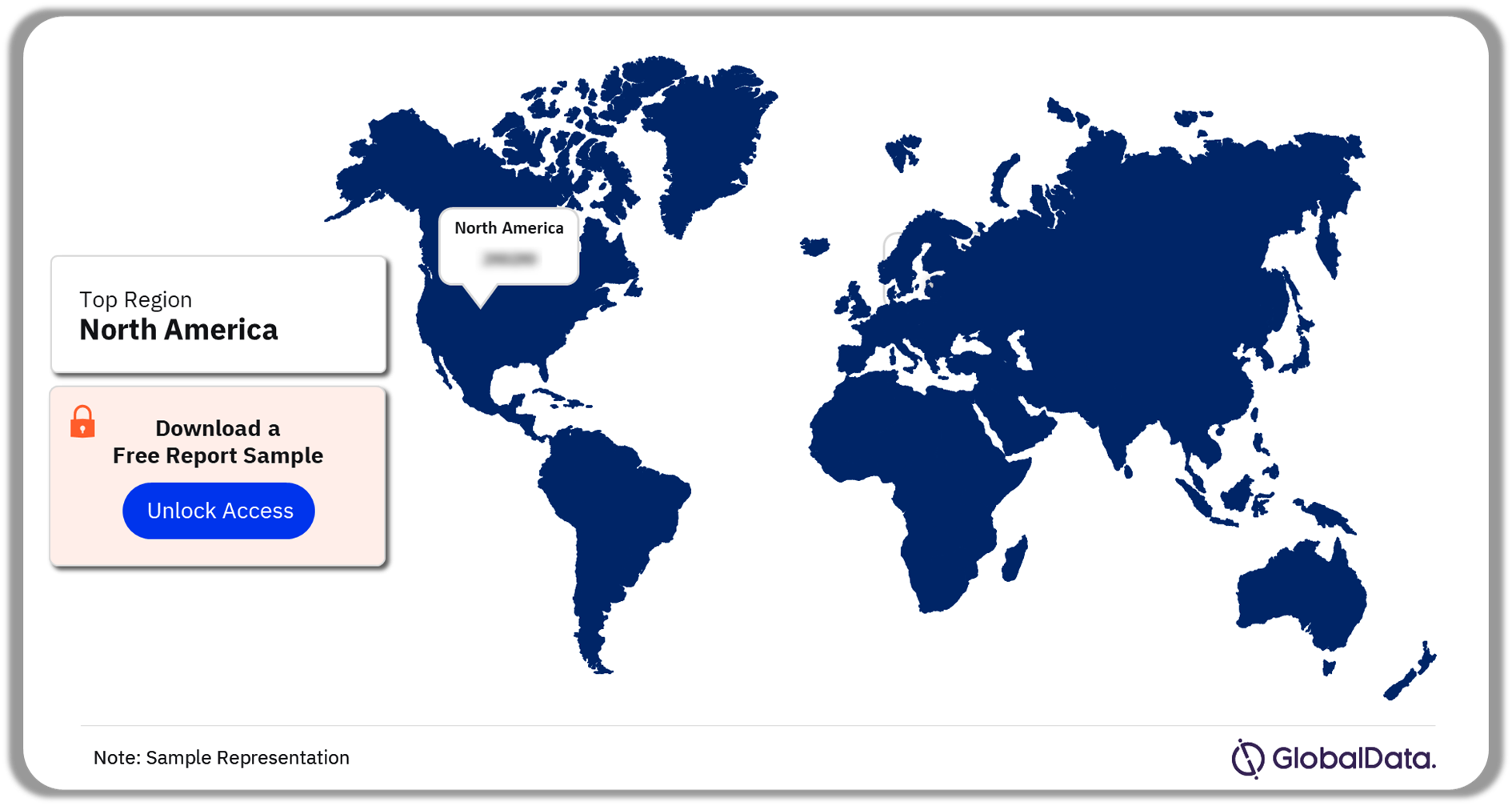Automated Homes Market Size, Share, Trends, and Analysis by Device Type, Region and Segment Forecast to 2030
Powered by ![]()
Access in-depth insight and stay ahead of the market
Accessing the in-depth insights from the ‘Automated Homes’ report can help you:
- Make informed decisions about market entry, technology adoption, and project planning.
- Identify competitors’ capabilities to stay ahead in the market.
- Identify promising device segments, growth trends, regional trends, and markets to expand your regional presence, product portfolio, and discover successful investment opportunities.
- Anticipate changes in demand and adjust business development strategies.
- Identify ongoing potential projects across regions.
How is our ‘Automated Homes’ report different from other reports in the market?
- The report presents in-depth market sizing information at a segment and sub-segment level for 10+ markets, including historical and forecast analysis for the period 2019-2030 for market assessment.
- The report offers detailed segmentation by device type – smart speakers, smart thermostats, smart lighting, smart security, and smart appliances.
- The report includes a detailed value chain analysis that helps businesses identify areas where they can improve their efficiency and effectiveness, reduce costs, and enhance their competitive advantage.
- The report entails analysis on key technological and regulatory trends impacting the adoption of smart home devices at a global and regional level.
- The report provides a company positioning analysis illustrating the competitive positioning of key companies in the automated home market. Additionally, it includes company profiles of key competitors in the market to provide in-depth information on the companies in terms of their revenue performances and strategic initiatives undertaken over the past three years.
- The report covers the latest trends and dynamics impacting and shaping the home automation industry, including recent mergers and acquisitions, macroeconomic trends, and technological trends.
- The report can be a valuable tool for smart home device companies to improve their products, increase customer satisfaction, and maximize profitability by analyzing the home automation trends, tracking market growth and demand, and evaluating the existing competition in the market.
We recommend this valuable source of information to anyone involved in:
- Smart Speaker Manufacturing
- Smart Thermostats Manufacturing
- Smart Lighting Manufacturing
- Smart Security Device Manufacturing
- Regulations and Policy Making
- Independent Research
- BI analysis
- Venture Funding
Automated Homes Market Report Overview
The global automated homes market size was valued at $119.5 billion in 2023 and is expected to grow at a compound annual growth rate (CAGR) of 12.0% during 2023-2030. Automated homes incorporate a range of devices and appliances, including TVs, fridges, ovens, thermostats, and smart speakers. These devices connect through a platform or hub, allowing users to control them via an app or voice commands. The use of home automation devices offers benefits such as convenience, energy efficiency, improved security, and superior control over home appliances. These benefits are expected to act as a major factor influencing market growth.
Automated Homes Market Outlook, 2019-2030 ($ Billion)
For Additional Insights on the Automated Homes Market Forecast, Download a Free Report Sample
The COVID-19 pandemic had a significant impact on the adoption of home automation devices. With people spending more time at home and seeking to make their living spaces more comfortable and convenient, the demand for smart home devices surged significantly in 2021. The growth trend continued post-pandemic as people experienced the benefits of these devices and got used to it. Additionally, the pandemic also increased the awareness and importance of hygiene & cleanliness, leading to the adoption of smart home devices that help with these tasks. For instance, smart air purifiers, smart vacuum cleaners, and smart washing machines are popular among homeowners seeking to maintain a clean and healthy living environment.
Smart security devices are also expected to drive market growth over the forecast period. Smart security devices offer several advantages over traditional security systems. They can be monitored and controlled remotely, allowing homeowners improved security and real-time updates of any misfortunate event. In addition, smart security devices can be integrated with other smart home devices, creating a more comprehensive and automated home security system. Enhanced security is prompting consumers to invest in smart security devices, thereby driving market growth.
Over the coming years, energy efficiency is expected to be a critical factor driving the adoption of smart home devices. Smart home devices can help users manage their energy consumption more efficiently, resulting in cost savings and reduced environmental impact. For instance, smart thermostats can learn users’ schedules and preferences and automatically adjust the temperature, accordingly, reducing energy waste. Similarly, smart lighting systems can turn off lights when a room is unoccupied, saving energy. As people become more aware of the importance of energy conservation, the demand for smart home devices is anticipated to grow over the coming years.
Growing technological advancements have made automated home devices more accessible and affordable, thereby promoting market growth. However, some customers are still reluctant to use such devices considering these devices are privy to their personal data. While privacy concerns are challenging the adoption of automated home devices, manufacturers are taking steps to address these concerns and to improve the overall security and privacy of their products. As awareness of these issues grows and consumers become more comfortable with the technology, adoption of smart security devices is likely to increase.
However, despite the rising demand, various challenges affect the growth of the automated homes sector. Unstructured and fragmented security regulations are a significant roadblock to the broader adoption of smart devices for automated homes. Fears around data privacy are widespread. Individuals may be concerned about hacking security cameras or other smart devices in their homes. Consumers need to be assured that their personal data is secure to increase adoption.
| Market Size (2023) | $119.5 billion |
| CAGR (2023-2030) | 12.0% |
| Quantitative Units | Revenue in $ Million/Billion and CAGR from 2023 to 2030 |
| Forecast Period | 2023-2030 |
| Historic Period | 2019-2021 |
| Report Scope & Coverage | Revenue Forecast, Competitive Index, and Growth Trends |
| Automated Homes Device Type Segment | Smart Speakers, Smart Thermostats, Smart Lighting, Smart Security, and Smart Appliances |
| Key Companies | Alibaba Group Holding Ltd, Amazon.com Inc, Apple Inc
Baidu Inc, Google LLC, Honeywell International Inc, Koninklijke Philips NV, NETGEAR Inc, Samsung Electronics Co Ltd, Sonos Inc, and Wyze Labs Inc |
| Enquire & Decide | Discover the perfect solution for your business needs. Enquire now and let us help you make an informed decision before making a purchase. |
Automated Homes Market Segmentation by Device Type
Based on the device type, the automated homes market has been categorized into smart speakers, smart thermostats, smart lighting, smart security, and smart appliances. Smart security devices such as door locks, surveillance cameras, and doorbells held a considerable revenue share in 2022. Smart security devices offer several advantages over traditional security systems. They can be monitored and controlled remotely, allowing homeowners to keep an eye on their homes even when they are away. They can also provide real-time alerts and notifications in the event of a security breach, enabling homeowners to take quick action and contact the authorities if necessary.
Smart speakers have experienced huge growth in recent years, mostly due to their user-friendliness and falling costs. Amazon provides its Echo Dot smart speakers at a very low price as a gateway to the broader Amazon ecosystem. Smart speakers are the tip of the iceberg for automated homes. They operate as control centers and increase consumer appetite for home automation technologies. Amazon and Google are key companies in the smart speaker market. Chinese brands such as Alibaba, Xiaomi, and Baidu are also gaining momentum with their lower-priced products, especially in the Asian markets.
Automated Homes Market Share by Device Type, 2023 (%)
Buy the Full Report to Get the Automated Homes Segment-Specific Revenues and Shares
The smart lighting segment is projected to record the fastest growth, with a compounded annual growth rate exceeding 15% from 2023 to 2030. The primary driver of smart lighting adoption is energy efficiency which also results in cost savings. Additionally, personalization and integration with smart home systems also promote the adoption of smart lighting systems. As technology continues to advance and prices continue to fall, smart lighting systems will likely become even more popular among consumers.
Automated Homes Market Analysis by Region
The automated homes revenue share in North America in 2022 was more than any other region and is expected to continue dominating the smart home devices market over the next six years. The region is characterized by affluent consumers who are willing to adopt new technologies. As consumers continue to embrace smart devices and companies develop new and innovative products to meet their needs, the region is expected to continue its dominance in the market.
Global Automated Homes Market Share by Region, 2023 (%)
Buy the Full Report for Additional Automated Homes Market Insights
Asia Pacific is anticipated to register the fastest compounded annual growth in the global automated homes market from 2023 to 2030. The region is home to some of the most populous countries in the world, that are rapidly moving towards urbanization. As cities in Asia Pacific become more crowded, the need for smart home devices that can make urban living more comfortable and convenient is increasing. Additionally, the aging population that needs home healthcare and monitoring is on the rise, thereby promoting segmental growth.
Automated Homes Market - Competitive Landscape
Competition in the automated homes industry is characterized by the presence of different vendors operating across different device types. Companies operating in the market have a stronghold in their respective solution offerings. For instance, Amazon.com Inc has a strong control in the smart speakers market, whereas the smart appliances segment is dominated by Samsung Electronics Co Ltd, BSH Home Appliances Corporation, and LG Electronics. Companies such as Google LLC, Amazon.com Inc, and Xiaomi have solution offerings across multiple layers of the value chain.
The intense market competition has led to companies opting for inorganic growth strategies to stay ahead of the competition. Companies are acquiring other companies to improve their product offerings, enhance their market share, or extend their geographical reach. For instance, in June 2023, ABB announced the acquisition of German smart home products manufacturer Eve Systems GmbH. The acquisition was aimed at leveraging Eve Systems’ extensive range of home automation, security, appliance monitoring, and energy management devices to strengthen ABB’s smart home technology portfolio.
Leading Companies in the Automated Homes Market
- Alibaba Group Holding Ltd
- com Inc
- Apple Inc
- Baidu Inc
- Google LLC
- Honeywell International Inc
- Koninklijke Philips NV
- NETGEAR Inc
- Samsung Electronics Co Ltd
- Sonos Inc
- Wyze Labs Inc
Other Automated Homes Market Vendors Mentioned
ADT, Baidu, Cisco, Dell, Deutsche Telekom, D-Link, Generac (Ecobee), HPE, Huawei, IBM, Ikea, Lenovo, LG Electronics, LifeSmart, Logi Analytics, Meta, Microsoft, Netatamo, Qlik, Qualcomm, Rokid, SAP, SAS, SK Telecom, Snowflake, Telefonica, Tencent, Toshiba, Verizon, Vodafone, Xiaomi, Xiaomi, and ZTE, among others.
Buy the Full Report to Know More About Leading Automated Homes Market Competitors
Automated Homes Market Scope
GlobalData Plc has segmented the automated homes market report by device type and region:
Automated Homes Device Type Outlook (Revenue, $ Million, 2019-2030)
- Smart Speakers
- Smart Thermostats
- Smart Lighting
- Smart Security
- Smart Appliances
Automated Homes Regional Outlook (Revenue, $ Million, 2019-2030)
- North America
- US
- Canada
- Europe
- France
- Germany
- Italy
- Spain
- UK
- Rest of Europe
- Asia Pacific
- Australia
- China
- India
- Japan
- Singapore
- Rest of Asia Pacific
- South & Central America
- Brazil
- Mexico
- Rest of South & Central America
- Middle East & Africa
Scope
This report provides overview and service addressable market for automated homes.
It identifies the key trends impacting growth of the market over the next 12 to 24 months, split into four categories: driver & challenges analysis, technology trends, macroeconomic trends, and regulatory trends.
It includes global market forecasts for the automated homes industry and analysis of patents, company filings, and hiring trends.
It contains details of M&A deals in the automated homes space.
The detailed value chain consists of four main aspects: device, connectivity, data, and app.
Key Highlights
The global automated homes market size was valued at $119.5 billion in 2023 and is expected to grow at a Compound Annual Growth Rate (CAGR) of 12.0% during 2023-2030. Growing IoT penetration, ability to reduce energy suage, improve convenience, provide enhanced security, and technologically advanced solutions is anticipated to drive the automated homes market.
Reasons to Buy
This market intelligence report offers a thorough, forward-looking analysis of the global automated homes market, device type, key vendor outlook, and key opportunities in a concise format to help executives build proactive and profitable growth strategies.
Accompanying GlobalData’s Forecast products, the report examines the assumptions and drivers behind ongoing and upcoming trends in automated homes market.
With more than 30 charts and tables, the report is designed for an executive-level audience, boasting presentation quality.
The report provides an easily digestible market assessment for decision-makers built around in-depth information gathered from local market players, which enables executives to quickly get up to speed with the current and emerging trends in automated homes market.
The broad perspective of the report coupled with comprehensive, actionable detail will help automated home devices manufacturers, investors, and other stakeholders succeed in the growing automated homes market globally.
Key Players
Alibaba Group Holding LtdAmazon.com Inc
Apple Inc
Baidu Inc
Google LLC
Honeywell International Inc
Koninklijke Philips NV
NETGEAR Inc
Samsung Electronics Co Ltd
Sonos Inc
Wyze Labs Inc
Table of Contents
Table
Figures
Frequently asked questions
-
What will be the automated homes market size in 2023?
The automated homes market size was valued at $119.5 billion in 2023.
-
What is the automated homes market growth rate?
The automated homes market is expected to grow at a CAGR of 12.0% during the forecast period (2023-2030).
-
What are the key automated homes market drivers for the forecast period?
Growing IoT penetration, the ability to reduce energy usage, improve convenience, provide enhanced security, and technologically advanced solutions are anticipated to drive the automated homes market.
-
What was the leading automated homes market segment in 2023?
The leading automated homes market segment in 2023 was smart appliances.
-
Which are the leading automated homes companies?
Some of the leading automated homes companies are Alibaba Group Holding Ltd, Amazon.com Inc, Apple Inc, Baidu Inc, Google LLC, Honeywell International Inc, Koninklijke Philips NV, NETGEAR Inc, Samsung Electronics Co Ltd, Sonos Inc, and Wyze Labs Inc.
Get in touch to find out about multi-purchase discounts
reportstore@globaldata.com
Tel +44 20 7947 2745
Every customer’s requirement is unique. With over 220,000 construction projects tracked, we can create a tailored dataset for you based on the types of projects you are looking for. Please get in touch with your specific requirements and we can send you a quote.













